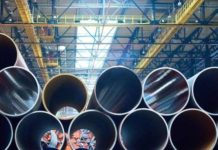The manufacturing industries use different methods to produce various products. Some famous manufacturing processes include injection molding, reaction injection molding, melt molding, compression molding, etc. However, each has its highs and lows. Therefore, it is essential to pick a process depending on the project’s requirements.
Reaction injection molding resembles plastic injection molding. However, it is a newer way to form more structured plastic products. Since the methods are almost similar, manufacturers often face confusion in selection. Here is a comparison of injection molding and reaction injection molding to help understand the suitability of each process.
What is reaction injection molding?
Since reaction injection molding uses the same fundamentals as injection molding, let’s understand what injection molding is.
Injection molding uses a heated barrel to melt the plastic materials (thermoplastics). The melted plastic flows to aluminum or steel molds and rests on mold-holding panels until hardening entirely. After cooling, ejector pins take out the formed structures from the molds.
In comparison, reaction injection molding uses thermoset materials to perform a curing reaction rather than heating and cooling the materials. The highly reactive plastics react, polymerize, and take the required form under high pressure.
Injection molding is preferable due to the economy for manufacturing small to medium-sized plastic foams. However, the reaction injection molding proves much more feasible for oversized plastic products.
Comparing injection and reaction injection molding
Manufacturing Costs
Injection molding requires more tooling costs. The process uses steel molds and needs more cooling time, increasing the overall efforts. However, high-volume productions balance the manufacturing costs per product.
In comparison, reaction injection molding uses less expensive molds as the temperatures are not extreme. Therefore, reaction injection molding is preferable in low-volume production, where the main goal is to reduce capital expenses. Consequently, it works suitably for prototyping because remaking the test products isn’t very expensive.
Suitability
Injection molding requires fewer labor costs because the process is easily automatable. In comparison, reaction injection molding is more suitable for making rapid prototypes and reducing costs when larger productions.
It produces light-density parts, which are significant in the automotive and aerospace industry. In comparison, the density of parts manufactured using plastic injection molding are heavier.
Equipment Overheads
Reaction injection molding is a less intensive process. It doesn’t require extreme temperatures, higher clamping forces, or holding and packing procedures like injection molding. Its low intensiveness reduces its overall equipment costs.
In comparison, injection molding equipment is more expensive because the process is relatively concentrated and requires high-powered machines.
Durability
Injection-molded parts have a slightly less lifespan than reaction injection-molded ones. Although the injection molded parts are easily recyclable, reaction molding offers more tensional strength and durability in the final product. Reaction molding can produce extremely complicated designs and details, while injection molding is more apt for thick wall castings.
Final Verdict
Injection molding is a globally popular method for producing plastic parts. It is highly scalable and economical to make hundreds of identical products. However, due to some drawbacks like compromises in details and higher density, experts developed reaction injection molding.
Both processes fall under plastic manufacturing. However, reaction molding is beneficial when you want greater details and lower densities. Moreover, its equipment is less expensive as well.
Both methods have their uses. The final choice largely depends upon the requirements of the projects and the allocated budgets.









